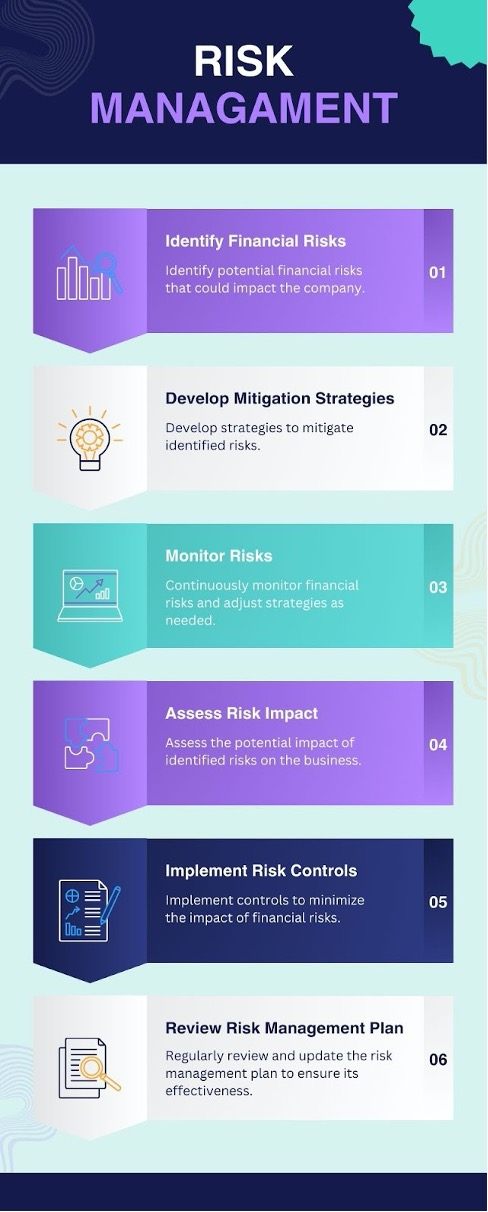
How Trading Platforms Help Traders Manage Risk in Forex
Trading platforms serve as the backbone of modern forex trading, offering sophisticated tools and features that enable traders to navigate the volatile currency markets effectively. These platforms have revolutionized risk management practices, providing traders with real-time analytics, automated trading capabilities, and comprehensive portfolio monitoring solutions.
Advanced Risk Management Tools in Modern Trading Platforms
Trading platforms now integrate cutting-edge risk assessment tools that calculate potential losses and gains based on historical data and market volatility. These calculations help traders make informed decisions about position sizing and leverage usage, reducing the likelihood of significant losses during unexpected market movements.
Position monitoring systems within these platforms track multiple currency pairs simultaneously, alerting traders when their portfolios face increased risk exposure. The automation of risk parameters ensures consistent application of trading rules, eliminating emotional decision-making that often leads to costly mistakes.
Real-Time Market Analysis Features
Advanced charting tools provide traders with instant market insights through technical indicators and pattern recognition algorithms. These visual representations of market data help identify potential entry and exit points while highlighting possible risk scenarios.
Price action analysis tools within platforms offer dynamic support and resistance levels, helping traders understand market momentum and potential reversal points. The integration of economic calendars with automated alert systems keeps traders informed about high-impact events that could affect their positions.
Automated Trading and Risk Control
Popular U.S. trading destinations have witnessed a surge in platform innovation, particularly in automated risk management systems. For traders seeking optimal trading conditions, working with a forex broker with lowest spread can significantly impact long-term profitability through reduced transaction costs.
Key risk control features in modern platforms include:
-
Stop-loss and take-profit automation
-
Position size calculators
-
Margin call alerts
-
Drawdown protection systems
Platform Comparison for Risk Management
Features
Basic Platforms
Advanced Platforms
Professional Suites
Risk Analytics
Limited
Comprehensive
Enterprise-level
Automation Tools
Manual trading only
Basic automation
Full automation
Market Analysis
Basic charts
Advanced indicators
AI-powered analysis
Portfolio Monitoring
Single account
Multiple accounts
Multi-asset tracking
Educational Resources and Support
Most trading platforms now include integrated learning modules that focus on risk management strategies and market analysis. These educational resources help traders develop a deeper understanding of market dynamics and risk mitigation techniques.
Platform providers regularly update their training materials to reflect current market conditions and emerging risk management practices. This ongoing education ensures traders stay informed about new platform features and risk management tools.
Integration with Risk Management Systems
Modern platforms seamlessly connect with external risk management systems and data providers. This integration enables traders to access a broader range of analytical tools and market data sources.

The consolidation of multiple data streams within a single platform interface simplifies the risk assessment process. Traders can quickly evaluate different scenarios and adjust their strategies based on comprehensive market analysis.
Mobile Trading and Risk Monitoring
Mobile trading applications have transformed how traders manage risk on the go with sophisticated alert systems and real-time position monitoring. These apps provide instant notifications about market movements that could impact open positions. The synchronization between desktop and mobile platforms ensures consistent risk management across all devices.
The integration of biometric security features adds an extra layer of protection for mobile trading activities. Push notifications keep traders informed about margin levels and potential risks even when away from their main trading station. Mobile platforms now offer nearly all the risk management capabilities of their desktop counterparts.
Custom Indicator Development
Modern trading platforms allow traders to create and implement custom risk indicators tailored to their specific strategies. These personalized tools can incorporate multiple data points to generate more accurate risk assessments. Traders can backtest their custom indicators against historical data to validate their effectiveness.
Platform development kits provide the framework for building sophisticated risk management algorithms. The ability to code custom indicators gives traders a competitive edge in identifying and managing potential risks. Advanced platforms support multiple programming languages for indicator development.
Risk Reporting and Analytics
Comprehensive reporting tools generate detailed analyses of trading performance and risk exposure patterns. These reports help traders identify weaknesses in their risk management strategies. Historical performance data provides insights for improving future risk management decisions.
Advanced analytics modules break down risk metrics into actionable insights for portfolio optimization. Regular risk assessment reports help maintain accountability and discipline in trading decisions. The automated generation of risk reports saves valuable time while ensuring consistent monitoring.
Multi-Account Risk Management
Enterprise-level platforms offer sophisticated tools for managing risk across multiple trading accounts simultaneously. Portfolio managers can implement uniform risk parameters across all managed accounts. The consolidation of risk metrics provides a clear overview of total exposure.
Cross-account monitoring systems alert managers to potential risk concentration issues. Advanced platforms enable the implementation of different risk strategies for various account types. Real-time synchronization ensures consistent risk management across all accounts.
Social Trading Integration
Social trading features allow traders to learn from the successful risk management strategies of experienced traders. These platforms provide detailed risk metrics for each copied trader's performance. The transparency of risk statistics helps users make informed decisions about which traders to follow.
Copy trading systems implement automated risk controls to protect followers from excessive losses. The ability to set maximum drawdown limits ensures conservative risk management when copy trading. Social trading platforms promote responsible risk management through community learning.
Platform Customization and Layout
Customizable workspace layouts help traders organize their risk management tools for optimal efficiency. The ability to create multiple monitoring windows allows for simultaneous tracking of different risk parameters. Traders can save and switch between different workspace configurations based on market conditions.
Platform customization extends to alert systems and risk-monitoring displays. Traders can prioritize the display of critical risk metrics for quick decision-making. The flexibility in platform layout helps maintain focus on essential risk management elements.
API Integration and External Tools
Modern trading platforms offer robust API connections for integrating external risk management tools. These integrations enable traders to incorporate proprietary risk analysis systems into their trading workflow. The seamless data flow between platforms and external tools enhances risk management capabilities.
API functionality allows for the development of custom risk management applications. Traders can connect their platforms to advanced data analytics services for improved risk assessment. The open architecture of modern platforms supports continuous innovation in risk management tools.
Conclusion
Trading platforms continue to evolve, offering increasingly sophisticated risk management capabilities that help traders navigate the complex forex market. By using these tools effectively, traders can better protect their capital while pursuing profitable opportunities in the currency markets.
Take action today by reviewing your current platform's risk management features and implementing a comprehensive risk control strategy. Remember, successful forex trading requires both powerful tools and disciplined application of risk management principles.
FAQs
How do trading platforms help prevent significant losses?
Trading platforms implement automatic stop-loss orders, position size limits, and real-time risk alerts to prevent catastrophic losses and maintain account stability.
Can trading platforms automate risk management completely?
While platforms offer extensive automation capabilities, they require human oversight to set appropriate risk parameters and adjust strategies based on changing market conditions.
What role do trading platforms play in portfolio diversification?
Platforms provide tools for monitoring correlations between different currency pairs and managing exposure across multiple positions, facilitating effective portfolio diversification.













